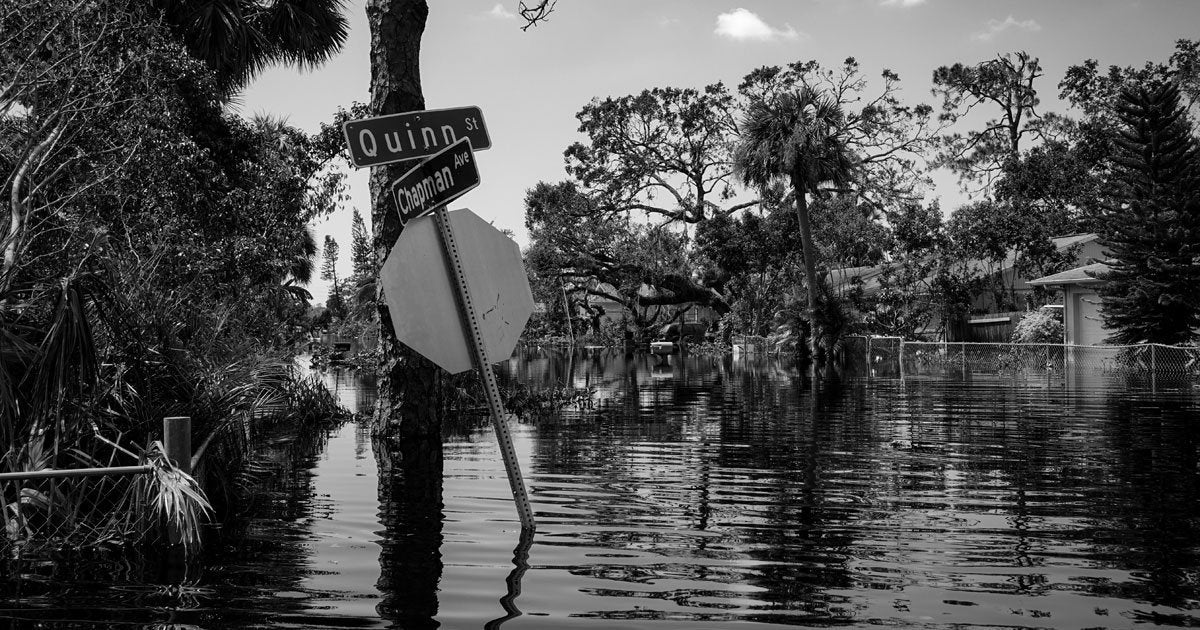","after_title":"","widget_id":"widget-0-0-1"}}" />[/siteorigin_widget]
Meteorologists are forecasting that 2018’s Atlantic hurricane season could rival 2017’s.
You remember 2017. Three of the five most costly hurricanes in U.S. history made landfall within a month: Harvey, Irma and Maria.
Charlie Ellis saw winds from Hurricane Irma catch an enormous, 10-story tree in his Miami backyard “like a giant sail.” The tree crashed down. It punched holes in his roof, destroyed his neighbor’s enclosed patio, pulled down power lines, crushed half his outdoor grill and would have smashed through his windows if he’d not put storm shutters up beforehand. The stump was so large the city had to bring a crane and flatbed to haul it out. It took 4 ½ months.
Ellis has learned much about hurricane preparedness – and those who are prepared – after living through 10 hurricanes.
“Usually you can tell the difference if people are prepared with food, water, or medicine,” Ellis said, “versus people who have absolutely no idea, and if they can’t get to Pizza Hut for dinner, they’re in trouble.”
He described four characteristics of people who are prepared for a disaster.
First, they already have a plan and know what they need to do well ahead of time.
As a hurricane approaches, Ellis watches weather reports to decide how he’ll respond. Will he evacuate or ride it out? What equipment will he need to prepare his home? What resources will he need to buy before people start panic buying? He plans for various scenarios.
Second, prepared people already have what they need to get ready and know in what order to prepare. When he knows a storm’s coming, Ellis pulls out equipment to fortify his house from natural and man-made intruders. For refrigeration, he gets out big fishing coolers to fill with ice.
Lake Hale, of Pleasant Grove, Utah, flew into Florida right after Irma left the state, to clean up a hotel on Marathon Key, about 27 miles from where Irma made landfall.
When the cleanup crew got to the hotel, it had a plan. The first step was to restore power. With power, crew members could run vacuums and fans to dry out rooms; they could use powered tools to cut out flooded drywall; and, equally important, they could power the lights, air conditioning and pumps to bring water to higher floors. Without power, they couldn’t even flush the toilet or shower, Hale said.
Next, they vacuumed out water and started drying rooms. Only afterward could they remove and repair.
Third, prepared people can anticipate what they’ll need and how much of it.
The cleanup crew Hale was in bought canned food and water in north Florida and tried to get more food in Miami. But stores there were empty. Produce was gone. Most of the water was gone. Even instant foods like ramen were gone, he said.
“It was pretty crazy. I’d never seen anything like that,” Hale said.
They ended up living on the canned food they bought earlier, eating it uncooked.
“A lot of canned tamales,” he said. “For three or four days, I had no vegetables. When you’re giving out the amount of calories you’re giving and not getting any nice calories back, it was tough.”
Before a hurricane approaches, Ellis makes sure he has enough food and water for at least five days.
“(Some people) just don’t think at all. They buy a case of expensive water. One case,” he said. “They think they can go to 7-11.”
He makes sure he has flashlights and the ability to charge devices, especially phones. He fills up vehicles’ gas tanks. He keeps a first-aid trauma kit on hand. He gets cleanup equipment like Squeegees and trash bags. And he buys “as much charcoal as humanly possible. “
“That way, I’m grilling,” he said.
He didn’t realize he’d need to buy tarps. But after the tree fell in his yard, he needed tarps to cover the holes the fallen branches punched in his roof. Fortunately, he had some on hand.
“You couldn’t buy one; you couldn’t even get one shipped. The mail was disrupted. Everything was disrupted,” he said.
Fourth, prepared people will be ready in case they need to evacuate.
Hale learned from his Irma cleanup experience that he wants to keep a go bag on hand, with plenty of nutrient-rich food.
“I’d really look into some sort of freeze-dried food, where you can get all the nutrients from vegetables and fruit, but all you have to do is add water,” he said.
You also need to have important documents and health care essentials like prescriptions.
And plan where you’ll go beforehand.
“You try to get a hotel and you realize the whole state is leaving,” Ellis said.
Ellis said he could tell people who aren’t prepared for hurricanes because they go into a “survival mode.”
“They try to stockpile huge quantities of things which they absolutely will not need,” he said. “You’re not going to eat 25 cans of baked beans in four days.”
Even with his experience, Ellis admitted Hurricane Irma had taught him more ways to prepare. Like prune back branches before a big tree comes down. And he said he’d like to have a generator of his own, so he’s not dependent on his neighbor’s.
“In a disaster, a lot of people think food and water. It’s very rarely that dire in the U.S. The reality is, comfort, cleanliness, care, shelter and communications are really what you have to get in Florida,” he said.

